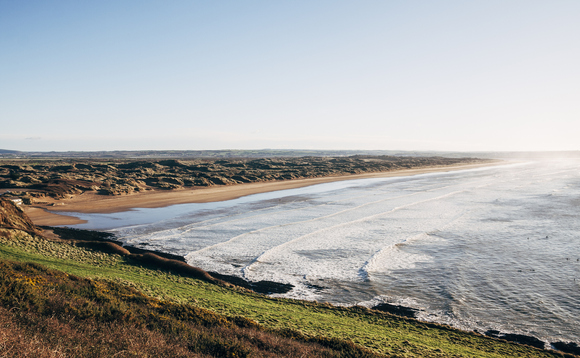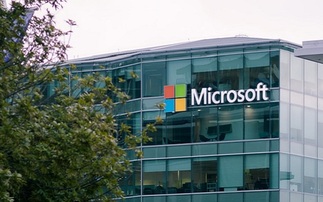The Devon biosphere reserve includes Braunton Burrows sand dunes | Credit: iStock
Ordnance Survey and CGI to lead project to combat sewage pollution spills at a nature reserve in Devon
The famous 'Pale Blue Dot' photograph of planet Earth taken from space could soon be getting a slightly murkier makeover, thanks to an innovative AI project being developed by mapping specialist Ordnance Survey and IT services firm CGI.
The two companies have teamed up to develop a remote satellite system for detecting sewage overspill events from space, harnessing a newly-created artificial intelligence (AI) model they claim is capable of predicting conditions most associated with pollution events "with high levels of accuracy".
Announced yesterday, the initiative is to focus on protecting nature from potential sewage spills at the North Devon UNESCO Biosphere Reserve on the UK's south coast, which covers 55 square miles and includes Braunton Burrows, England's largest sand dune system.
Combining their own local data alongside that from the Environment Agency and OpenSource satellites, the two firms plan to use AI to map out where past sewage pollution incidents have taken place in the reserve over a time period using CGI's geodata platform.
By bringing data together from multiple sources and sensors, the project aims to identify where and when pollution incidents take place, and where they may occur in the future. If successful, the firms believe the approach could be scaled up to combat sewage pollution incidents right across the UK.
Donna Lyndsay, strategic market lead for environment and sustainability at Ordnance Survey, said she hoped the project would help to provide "actionable insights for addressing water pollution events".
"We are looking forward to testing the AI models produced in our previous phase to see how they perform in the real world," she explained. "We want to see if our work can be really used to support the Biosphere needs in identifying interventions to help preserve and restore our valuable habitats. If successful this has the potential to support remote monitoring of UK waterways for signs of pollution using data that is objective, regularly updated, and scalable."
The scale of Britain's water pollution problem has fallen under the spotlight in recent months, with water companies accused of repeatedly pumping raw sewage into waterways and coastlines, sparking a political row in the run up to last week's local elections across England.
Raw sewage was pumped into England's rivers on more than 300,000 occasions last year, and at least 90 beaches across the country have been contaminated by discharges, research has found.
Mattie Yeta, chief sustainability officer for CGI in the UK, said the AI and satellite data approach to detecting sewage pollution being developed through the initiative could help farmers, governments, water companies, and local communities reduce the risk of sewage spills.
"Following a successful first phase of the project, which led to the creation of an AI and satellite tool that can predict pollution events with up to 91.5 per cent accuracy, we are excited to launch this second phase, which provides an innovative and proactive approach to environmental management and nature protection," she added.
The project is the latest to be undertaken by CGI's Sustainability Exploration Environmental Data Science (SEEDS) programme, a research initiative launched last year in partnership with academic and the United Nations.
Andrew Bell, CEO of the North Devon Biosphere reserve, said the collaboration with SEEDS offered "a great opportunity to take our work in digital twinning in a catchment and test its enhancement with remote sensing for water pollutants".
"Here in the UNESCO biosphere reserve, we are keen to push the boundaries of the application of science to improve sustainability of the environment and the links between people and nature," he said.
Want to understand what is going on at the cutting edge of sustainability? Check out BusinessGreen Intelligence - the premier information for professionals focused on the UK's green economy.










